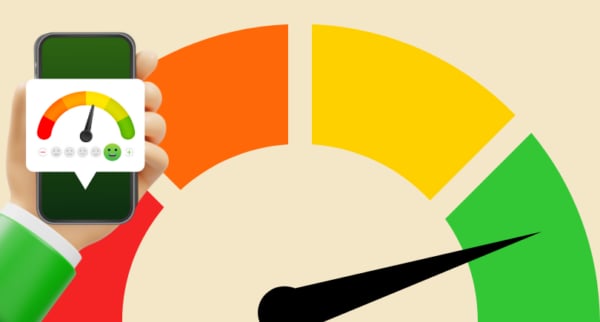Upgrade Cash Rewards Visa® review
Rather than a traditional credit limit, this card provides customers with a line of credit to make paying off your balance more predictable and even help your credit score thanks to the way the debt is reported to credit bureaus.
Upgrade Cash Rewards Visa®
- Regular APR
- reg_apr,reg_apr_type
- Annual Fee
- annual_fees
Key Features
descriptionEditor Analysis:
- This card functions more like a personal credit line instead of a credit card. Enjoy predictable payments on your credit line rather than racking up unpredictable interest charges.
- Enjoy no fees - there is no annual fee.
- Free access to credit monitoring, alerts and features to help you understand your credit.
- You may not qualify if you don't have a credit history.
Blue Cash Preferred® Card from American Express
discontinued_disclaimerBy combining the fixed payments of a loan with the convenience of a card, Upgrade Cash Rewards Visa® is taking a new approach to paying with credit.
While credit cards regularly offer new perks, rewards and redemption options, they all work in basically the same way. You spend money each month, up to a pre-approved credit limit, and then have the option to pay back the balance over time understanding that you’ll pay interest on the amount you don’t pay back right away. It’s not often that we come across a card that works differently.
However, the Upgrade Cash Rewards Visa® upends that formula. Rather than offering a traditional credit limit, it provides customers with a line of credit designed to make paying off your balance more predictable and even help your credit score thanks to the way the debt is reported to credit bureaus.
Plus, this card sets itself apart from the competition in other ways:
- Available to those with a record of bankruptcy or with a credit score as low as 600, depending on factors such as income and credit history
- Earn unlimited 1.5% cash back on every purchase
- Earn a $200 welcome bonus when you open and fund a new Upgrade Rewards Checking Preferred account and make three debit card transactions with 60 days of your card opening. (*To qualify for the welcome bonus, you must open and fund a new Rewards Checking Preferred account through Upgrade and make 3 qualifying debit card transactions from your Rewards Checking Preferred account within 60 days of the date the Rewards Checking Preferred account is opened. If you have previously opened a checking account through Upgrade or do not open a Rewards Checking Preferred account as part of this application process, you are not eligible for this welcome bonus offer. Your Upgrade Card and Rewards Checking Preferred account must be open and in good standing to receive a bonus. To qualify, debit card transactions must have settled and exclude ATM transactions. Please refer to the applicable Upgrade Visa(R) Debit Card Agreement and Disclosures for more information. Welcome bonus offers cannot be combined, substituted, or applied retroactively. The bonus will be applied to your Rewards Checking Preferred account as a one-time payout credit within 60 days after meeting the conditions. This one-time bonus is available through this Upgrade Card offer and may not be available for other Upgrade Card offers.)
HOW DOES THE UPGRADE CASH REWARDS VISA® WORK?
On the surface, Upgrade Cash Rewards Visa® works the same as any other credit card. Cardholders receive a personal line of credit with the amount depending on creditworthiness. That credit can be used online or in stores, wherever Visa is accepted. Money from the line of credit can also be withdrawn directly into a bank account.
Where Upgrade Cash Rewards Visa® differs from traditional credit cards is that at the end of each month, the card combines all your purchases into a single personal loan that has a fixed-rate and a fixed term. That means if you spend $1,000 in a single month, you’ll be assigned a payment that allows you to pay off that debt in two, three or more years. This arrangement gives you a predictable payment amount and the assurance that you won’t be paying off your debt for decades or accruing unpredictable amounts of interest as can happen when making minimum payments on a traditional credit card.
Each month, the terms of a new personal loan for that month’s purchases and withdraws will be calculated. That monthly payment will then be added to the payments from previous months. There is no penalty for early payoff, and any additional payments made above the monthly minimum will be applied on a pro-rata basis to the outstanding balances.
WHAT IS A CREDIT LINE?
Upgrade Cash Rewards Visa® offers customers a line of credit which is slightly different than the traditional spending limit found on credit cards. The credit line is essentially a pre-approved loan from Upgrade Cash Rewards Visa® that you can access whenever you want.
In practice, a credit line works the same as a traditional limit issued by a credit card, but it is quite different when it comes to credit bureau reporting. Upgrade Cash Rewards Visa® reports its line of credit more similar to a personal loan than a revolving credit card account.
As a result, the balance on your Upgrade Cash Rewards Visa® doesn’t get counted toward your debt utilization ratio, a significant factor in determining your credit score. This ratio refers to what percentage of available credit a person is using. A higher percentage can negatively impact someone’s credit score. For someone who is trying to improve their score, a credit line from Upgrade Cash Rewards Visa® could be more beneficial than using a traditional credit card. Given recent changes to how FICO is calculating scores– that is, taking a longer view of your payment history and credit utilization over time rather than in a one to two-month snapshot– the fact that the Upgrade Cash Rewards Visa® line of credit doesn’t affect your credit utilization could be quite important.
HOW TO SAVE WITH THE UPGRADE CASH REWARDS VISA® CARD
The fixed payments offered by Upgrade Cash Rewards Visa® can save thousands of dollars and shave years off a debt repayment schedule.
For example, an Upgrade Cash Rewards Visa® customer who pays off a $10,000 balance with a plan that charges an 18% APR over a 24-month loan term would make fixed monthly payments of $504.29 and spend $2,102.71 in interest in the process. However, making minimum payments (assuming interest plus 1% of the principal to find your minimum payment due) on a $10,000 credit card balance at the interest rate of 18% could mean you pay $14,423.16 in interest and don’t pay off the balance for more than 28 years.
As a side note, this is an excellent illustration of why making the minimum payment on a credit card balance can doom you to years and years of debt. Also, keep in mind that, in addition to saving you a ton in interest charges, the Upgrade Cash Rewards Visa®line of credit balance won’t count against your credit utilization ratio during the two years you’re paying off that loan. Twenty-eight years is a long time to have such a chunk of debt raising your ratio should you go the traditional credit card route.
POTENTIAL DOWNSIDES OF THE UPGRADE CASH REWARDS VISA®
Although the Upgrade Cash Rewards Visa® can be a good choice for many people, it does have some downsides.
While money from a credit line can be transferred to a bank account, it can’t be accessed from an ATM. That eliminates the possibility of instant access to cash from your credit line although that could be a benefit in deterring some impulse spending and it means you don’t have to think about cash advance fees.
Another drawback is that this rewards-earning version of the card is geared toward people with at least fair credit. The rewards themselves are modest, though, so if you’re primarily looking for a rewards card and you have at least fair credit, there are likely better options.
Lastly, the card charges foreign transaction fees of foreign_fee, so you’ll want to leave it at home when you travel abroad and reach for a different card if you’re paying online in foreign currency.
HOW DOES THE UPGRADE CASH REWARDS VISA® COMPARE TO OTHER CARDS FOR FAIR CREDIT?
Upgrade vs. Capital One QuicksilverOne Cash Rewards Credit Card
discontinued
Both the Upgrade Cash Rewards Visa® and Capital One QuicksilverOne Cash Rewards Credit Card can be used to build credit, but there are notable differences between these two options.
For starters, you’ll pay a AnnualFees annual fee for the QuicksilverOne card while there is no annual fee for the Upgrade card. However, in exchange for that fee, Capital One cardholders get 1.5% cash back on all their purchases. The Upgrade Cash Rewards Visa® offers 1.5% cash back on every purchase, with no annual fee.
In terms of interest, the default rate for the QuicksilverOne card is RegAPR. Interest rates on Upgrade currently range from RegAPR, which could lead to significant interest savings if you qualify for the lower end of that spectrum.
Upgrade Cash Rewards Visa® vs. Capital One Platinum Credit Card
discontinued
The Upgrade Cash Rewards Visa® and Capital One Platinum Credit Card have a few similar features.
Neither card charges an annual fee. However, you will pay a late fee on late payments with the Capital One Platinum, and there is a cash advance fee for the card as well.
If you’re choosing between the two cards, interest may be the biggest factor to consider. The Upgrade Cash Rewards Visa® will charge you from RegAPR in interest but provides a fixed payback period that limits how much you pay overall. However, the default rate on the Capital One Platinum Credit Card is RegAPR and may be paid off over a longer period and at a greater expense if only minimum payments are made.
Disclaimer:The information in this article is believed to be accurate as of the date it was written. Please keep in mind that credit card offers change frequently. Therefore, we cannot guarantee the accuracy of the information in this article. Reasonable efforts are made to maintain accurate information. See the online credit card application for full terms and conditions on offers and rewards. Please verify all terms and conditions of any credit card prior to applying.
This content is not provided by any company mentioned in this article. Any opinions, analyses, reviews or recommendations expressed here are those of the author’s alone, and have not been reviewed, approved or otherwise endorsed by any such company. CardRatings.com does not review every company or every offer available on the market.










